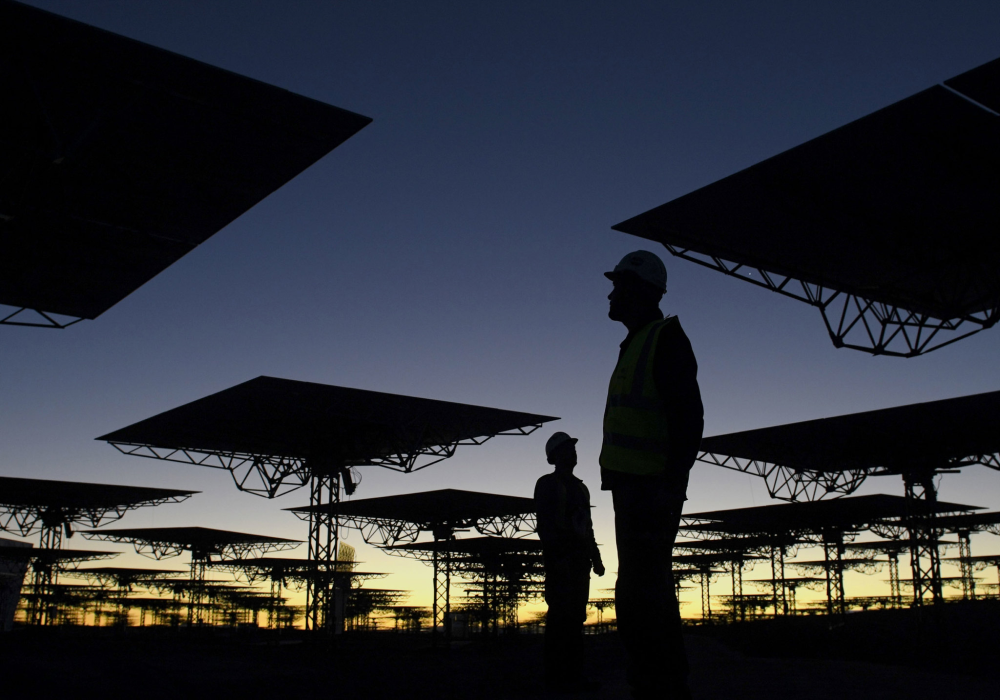John McNally is the director for growth at the PLACE Centre, a new initiative from the Smart Prosperity Institute focused on place-based policy solutions for communities to grow their clean economies.
Climate action in Canada will create millions of new jobs and attract hundreds of billions of dollars in investment in the decades to come – much to the benefit of Canadian communities.
From improving the energy efficiency of homes in Victoria, British Columbia, to producing hydrogen in Stephenville, Newfoundland, careers will be built across the country. But which clean economy opportunities will create green jobs in which regions?
Analysis from the PLACE Centre, a new initiative of the Smart Prosperity Institute, shows where these jobs might occur by 2030 and what they might look like. The answer: every single community across the country has an opportunity to create jobs and attract investment as Canada’s economy reduces its emissions. To make this happen, regions need to keep advancing ambitious climate action, and develop greater place-based policies.
These opportunities look different for each region. In Prince Edwad Island’s Stratford and Summerside regions, hundreds of new roles could be created in sustainable agriculture. In Quebec’s Saint-Jean-sur-Richelieu, manufacturing cleantech could be a source of stable careers for skilled tradespeople. Supporting the growth of Canada’s mass timber industry could be a major employer around Prince George and Quesnel in British Columbia. Installing renewable energy could employ Indigenous young adults in the Gwich’in and White River First Nation communities in the Yukon.
So, what is needed to help communities realize these opportunities? Given the uncertainty facing the world right now, the best way to offer advice to regions thinking about the future is to consider how they may be affected by global trends. Levels of global cooperation may change as a result of economic disputes between trade partners. The ongoing war in Ukraine, a lingering COVID-19 pandemic and increasing natural disasters from a changing climate will all continue to disrupt supply chains moving forward. Our work forecasts, then compares, four versions of the future up to 2030. That way, we can show the impacts each trend may have and offer advice for regions to make the most of the opportunities arising from each potential future.

Our first piece of advice: stick with ambitious climate action. Even in a future where disruptions to supply chains from conflict worsen, pandemics and natural disasters skyrocket, and trade declines, climate action will still create tens of thousands of green jobs in regions like Kindersley-Kerrobert, Saskatchewan; around Cold Lake, Alberta; and near Edmundston and Miramachi, New Brunswick. In any future, clean growth is still growth, and it will support strong livelihoods and help Canadian companies sell into new markets.
The second: we need to think differently about helping regions realize their potential. Forecasts show that some regions will be hit harder by economic disruptions than others. For others, Canada’s clean economy story is about managing all the growth they will likely see.
Both challenges can be better managed through a place-based perspective. In areas that are expected to be harder hit, we need to make strategic investments in clean growth opportunities that can create green jobs. The announcement of a new green-hydrogen production facility in Stephenville, Newfoundland, fits this bill nicely. Governments can, and should, support projects like these through funding programs such as the federal Net Zero Accelerator initiative and the federal Canada Growth Fund.
In areas where growth is expected, there are different challenges. To capitalize on these investment opportunities, tens of thousands of new workers will need to take new jobs. These workers will need to be trained and will need affordable places to live. Ambitious investments and focus on skills training, and making housing more affordable, are needed in these regions from federal and provincial governments.
And our final piece of advice: Canada needs more ambitious policies to force our greenhouse gas emissions on a downward trajectory to ensure this growth does not derail our climate goals. The oil and gas sector is one area that requires more government attention. Recent analysis from the Canadian Climate Institute identified that a strict emissions cap and strong regulations on methane emissions are needed to keep emissions in the sector aligned with climate goals. Given the industry’s current windfall from higher oil prices, it is likely to attract investment and create jobs in the coming decade. Canadian policy-makers across all levels of government should not allow these economic benefits to put our climate goals out of reach.
The analysis from the PLACE Centre makes one thing clear: Canada’s economic future will not rise or fall based on global trends or climate action. It will be driven by the success of its rich and diverse communities capturing the opportunities that make sense for them. Canada needs to invest in regional solutions and focus on helping communities turn their vision for a clean-growth future into a reality. If regions across the country get this right, we can change the world around us to better suit the interests of our communities, instead of waiting to see what happens.







